PHILIPPINES
Plants and Animals

Plants and Animals

Cities in PHILIPPINES
| Manila |
Plants and Animals
Plants
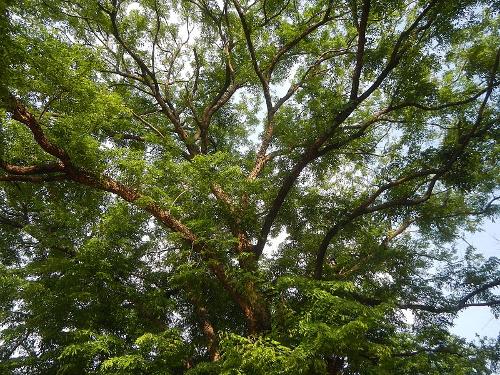 Narra National Tree of the PhilippinesPhoto: Judgefloro in the public domain
Narra National Tree of the PhilippinesPhoto: Judgefloro in the public domain
The plant world of the Philippines is very rich and varied with more than 10,000 tree, shrub and fern species alone. The little remaining primary jungle has between 2500 and 3000 tree species, many of them endemic. In total there are approximately 6000 tree, shrub and flower species endemic.
The fertile slopes of the volcanoes include the narra, the national tree, and forest giants such as molave, apitong and red lauan. Thick lianas hang from those trees and tree ferns and thorny rathania bushes grow on the ground. This type of forest, with a wide variety of tree species, is called the dipterocarpic rainforest. Many of the large tree species found here belong to the Dipterocarpaceae family. In the higher areas of the central mountainous region of Luzon you will find pine forests (including Benguet pine), oaks and rhododendrons.
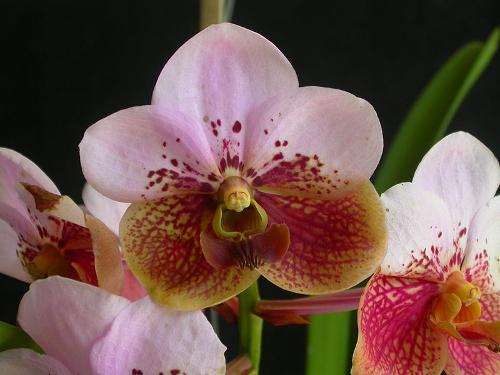 Waling-Waling PhilippinesPhoto: Dalton Holland Baptista CC 3.0 Unported no changes made
Waling-Waling PhilippinesPhoto: Dalton Holland Baptista CC 3.0 Unported no changes made
More than 900 species of orchids grow in the Philippines, including the very special waling-waling. Also beautiful to see are fire acacia, hibiscus, bougainvillea and frangipani.
Crop plants are rice, corn, sugar cane, abaca, tobacco, coconut palms and rubber trees; fruits such as mango, durian, pineapple, cocoa, coffee and bananas.
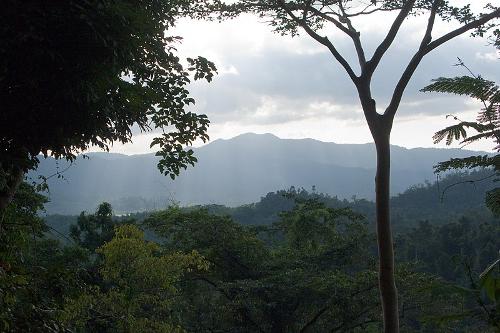 Rainforest on Palawan Island, PhilippinesPhoto: Vyacheslav Argenberg CC 4.0 International no changes made
Rainforest on Palawan Island, PhilippinesPhoto: Vyacheslav Argenberg CC 4.0 International no changes made
The tropical rainforest in the Philippines is very fragile. The soil layer in the Philippine jungles is very thin, so that the trees have only a shallow root system.
When a piece of forest is cut down, the thin soil layer quickly suffers from erosion and becomes impoverished at a rapid pace. In the period after the Second World War, there was widespread deforestation and the forest area has decreased significantly.
Animals
GENERAL
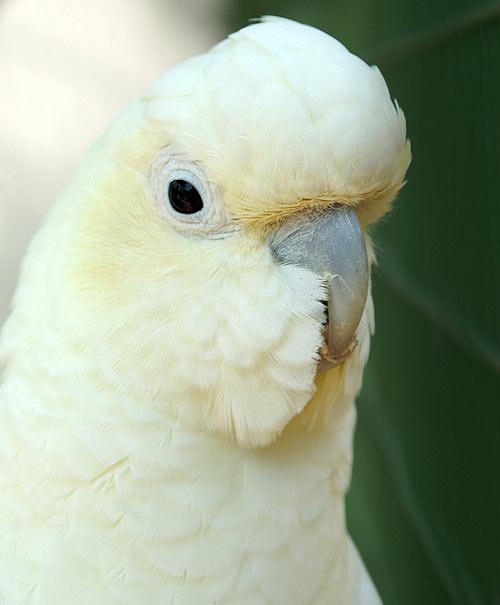 Philippine CockatooPhoto: Patrick Gijsbers Cc 4.0 International no changes made
Philippine CockatooPhoto: Patrick Gijsbers Cc 4.0 International no changes made
The many biotopes in the Philippines have resulted in a great diversity of fauna. In addition, there are very many endemic species due to the geographically isolated position of the many islands.
The Philippines is in the transition zone of the Southeast Asian animal kingdom and the Australian animal kingdom. So there are species that come from mainland Asia, as well as species with an Australian origin, for example the Philippine cockatoo.
Large mammals such as elephants, tigers and rhinoceroses have not been found in the Philippines since prehistoric times.
MAMMALS
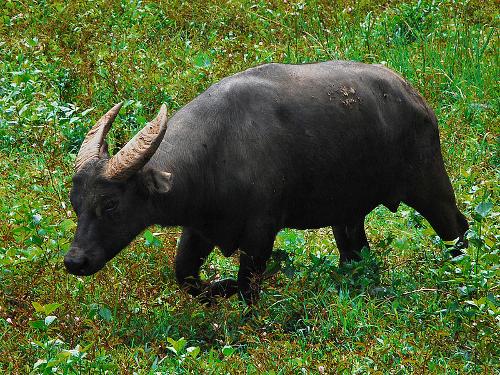 Tamaraw PhilippinesPhoto: Gregg Yan CC 3.0 Unported no changes made
Tamaraw PhilippinesPhoto: Gregg Yan CC 3.0 Unported no changes made
Most mammals do not come into action until dusk or at night, so they are difficult to spot. About 230 species of mammals live in the rainforest.
A special feature is the rare tamaraw, a dwarf grove that only occurs on the island of Mindoro. The Philippine sambar, a deer species, on the other hand, is found throughout the archipelago. Rare is a subspecies of the chital and on the island of Balabac there is the kantjil, a dwarf deer. Only in Palawan is the rare dwarf deer "pilandok", one of the smallest deer in the world, no bigger than a hare.
The land predators in the Philippine forests are all not much bigger than a hefty domestic cat, including the Bengal cat, the palm civet, the tangalunga (type of civet) and the Philippine stink badger. On the island of Palawan the binturong or bear marten and the dwarf gotter are still found.
Monkey species include the Philippine macaque and the Philippine tarsier. The flying lemur or lemur are special. Very rare is the kobold lemur or "tarsius", which is only found in the "Chocolate Hills" on the island of Bohol.
Mammals also include many bat species. In the Philippines, there are many insect-eating and fruit-eating species, about half of which are endemic. The largest is the gold-crowned along with a wing span of approx. 130 cm.
Dolphins, pilot whales, fin whales, sperm whales and Bryde's whales can be found in Philippine waters.
BIRDS
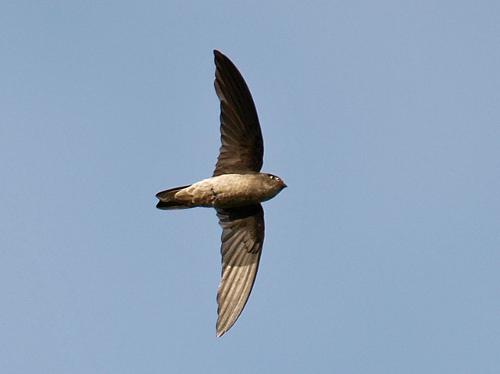 Salangan, PhilippinesPhoto: Wokoti CC 2.0 Generic no changes made
Salangan, PhilippinesPhoto: Wokoti CC 2.0 Generic no changes made
More than 700 species of birds have been counted in the Philippines. The Philippine (monkey) eagle is one of the largest eagle species in the world. Most couples live on Mindanao Island, but it is a highly endangered species. Other notable birds of prey include the Philippine snake eagle and the very small Philippine pygmy falcon.
Five species of hornbills are found in the archipelago, including the red hornbill, the Sulu hornbill and the Palawan hornbill. The island of Palawan is also home to the rare and nowhere else in the world known Palawan fairy bluebird.
Common are the Asian little bittern, a heron species, and the stork's bill, a kingfisher species. Another common kingfisher species is the white-collared kingfisher. Special among the many pigeon species is the bleeding heart pigeon and the pied imperial pigeon.
Interesting birds are the salangans, a common swift species. They make nests from which the Chinese prepare their famous bird's nest soup.
The mangrove areas are a habitat for many birds, including the little mangrove heron, the reef heron and the Sumatran heron. Plovers, horsemen, curlews and sandpipers forage in the mudflats. The white-bellied sea eagle still occurs in some coastal areas.
Typical seabirds are various types of terns, gannets or boebies and frigate birds.
REPTILES AND AMPHIBIANS
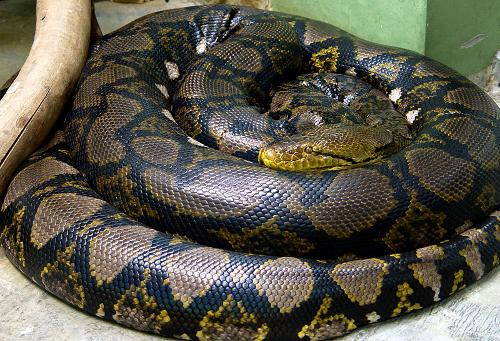 Python PhilippinesPhoto: Mariluna CC 3.0 Unported no changes made
Python PhilippinesPhoto: Mariluna CC 3.0 Unported no changes made
Among reptiles and amphibians in the forest areas are various flies or floating species, such as the flying dragon, flying frog and even the golden tree snake can soar through the air.
The reticulated python (up to 8.5 meters) and the venomous king cobra (3-4 meters) are impressive, while the common cobra with its two meters may also be there. In total, there are at least 35 snake species (including sea snakes) in the Philippines, half of which are poisonous. In Lake Taal on the island of Luzon, a rare snake species, Hydrophis semperi, belongs to the family of sea snakes. It is the only sea snake in the world that has adapted to life in fresh water and is found nowhere else.
Along rivers are striking appearances the Indian monitor lizard and the Philippine water lizard, both excellent swimmers. The two species of crocodiles have become very rare in the Philippines and are only found in the islands of Palawan and Mindanao.
Characteristic animals for all of Southeast Asia are the geckos, small lizards that often reside in people's homes. A relative of the gecko is the also common, and somewhat larger tokeh, so named for its piercing call. The armored lizard can grow up to one meter long.
INSECTS
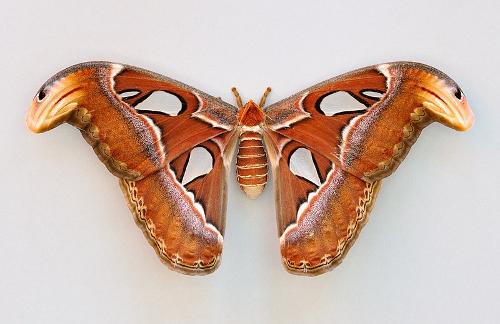 Atlas Butterfly PhilippinesPhoto: Quartl CC 3.0 Unported no changes made
Atlas Butterfly PhilippinesPhoto: Quartl CC 3.0 Unported no changes made
Butterflies of paradise stand out for their beautiful colors and can reach wingspan of up to 20 cm. The Atlas butterfly is the most impressive of the moths.
Cockroaches are not appreciated especially by tourists. They look creepy, but are otherwise not dangerous to humans.
The giant grasshopper, over 30 cm long, is the largest insect in the world.
FISH AND CRUSTACEANS
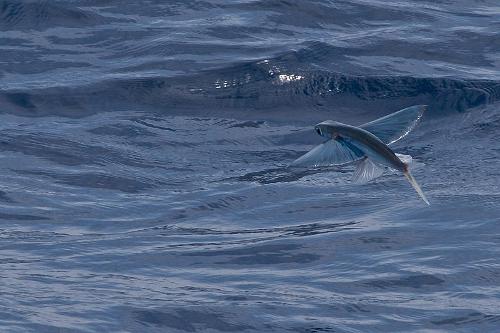 Flying fish, PhilippinesPhoto: Mike Prince CC 2.0 Generic no changes made
Flying fish, PhilippinesPhoto: Mike Prince CC 2.0 Generic no changes made
The coral reefs around the Philippine islands are home to countless (about 2000 species) often beautifully colored fish and other sea creatures.
A random list: lionfish, marquise, mask pennant, eyespot coral butterfly, bullfish or horned boxfish, stonefish, trigger fish, parrotfish, reef bass, clownfish, octopus. Echinoderms include sea lilies, brittle stars, starfish, sea urchins, sea cucumbers.
On the open sea, the flying fish are striking appearances. They can remain in the air for seconds and thus bridge tens of meters. Other impressive sea creatures include the barracuda, manta ray and whale shark.
Buhi Lake is home to the less than 1 centimeter tall "sinarapan", the world's smallest edible fish, according to the Filipinos.
The Philippine waters are home to many types of crustaceans. Snails in particular are very well represented, and as far as the shell is concerned, the cowries are popular, especially the tiger kaurie. The poisonous cone snails are also popular with the Filipinos. At night, coconut palm lobsters or flapper thieves appear on the beaches.
Typical animals for the mangrove areas are the mud jumpers. The male crab is notable for its enormous claws and the soldier crabs can burrow into the silt at lightning speed. The Moluccan crab, a living fossil, is still caught by the fishermen of Palawan.
In 2006, American scientists discovered a new parrot and a new mouse species on Camiguin Island.
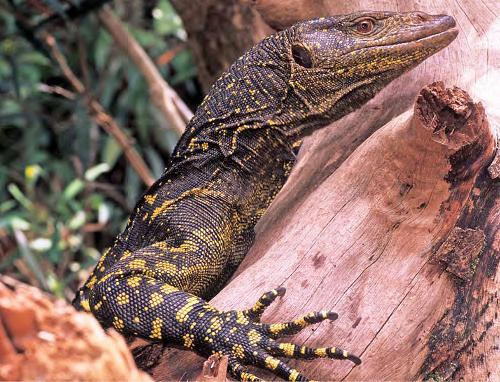 Varanus Bitatawa, PhilippinesPhoto Brown R, Siler C, Oliveros C et al. CC 2.0 Generic no changes made
Varanus Bitatawa, PhilippinesPhoto Brown R, Siler C, Oliveros C et al. CC 2.0 Generic no changes made
In 2009, students at the University of Kansas in the United States in the northern Philippines discovered a new lizard species, the 'Varanus bitatawa'. The reptile measures two meters and the males have two penises. DNA research showed that the reptile is related to the Komodo dragon.
Sources
Filippijnen
Het Spectrum
Philippines
Lonely Planet
Poppe, D. / Reishandboek Filippijnen
Elmar
Rodell, P.A. / Culture and customs of the Philippines
Greenwood Press
Wee, J. / Philippines
Chelsea House
CIA - World Factbook
BBC - Country Profiles
Copyright: Team The World of Info